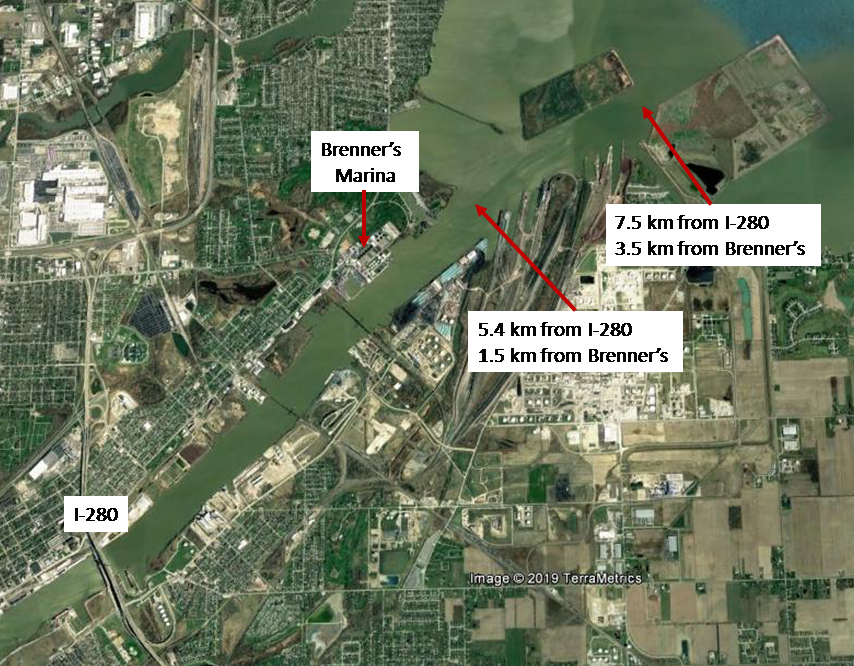

Newly Hatched Invasive Grass Carp Found in Maumee River, Ohio
First larval grass carp captured within Great Lakes watershed
March 6, 2019
CONTACT:
Patrick Kočovský (USGS)
pkocovsky@usgs.gov
419-625-1976
Marisa Lubeck(USGS)
mlubeck@usgs.gov
312-846-5330
Christine Billau(University of Toledo)
Christine.Billau@utoledo.edu
419-530-2077
A genetic analysis conducted by the U.S. Geological Survey recently confirmed that larval, or newly hatched, fish collected from the Maumee River during the summer of 2018 are grass carp, one species of invasive Asian carps that threaten the Great Lakes. The Maumee River is a tributary to Lake Erie.
These young fish are the first grass carp collected in their larval stage from within the Great Lakes watershed. Other life stages, including fertilized eggs, juveniles and adults, have been previously documented in tributaries and shoreline areas of Lake Erie. Identifying locations with larval grass carp in the Maumee River will help inform management decisions and allow natural resource agencies to better focus limited resources on grass carp removal efforts.
“If grass carp become abundant in Lake Erie they could consume large amounts of aquatic vegetation, ultimately reducing habitat for native fish and other aquatic animals and diminishing food resources for waterbirds,” said USGS scientist Patrick Kočovský. “The Lake Erie ecosystem is a major contributor to the Great Lakes’ multi-billion dollar per year fishery.”
On June 13 and 26, 2018, a sampling crew from The University of Toledo collaborating with the USGS sampled the Maumee River in Toledo, Ohio, for early life stages of grass carp. The larval grass carp were collected near the I-280 bridge in the city of Toledo and near the river mouth adjacent to Brenner’s Marina during high water flow events typical of spawning conditions for grass carp. While the samples were being processed in January 2019, six larval fish resembling grass carp were identified.
These larval fish were sent to the USGS for genetic confirmation. Scientists analyzed DNA extracted from each larva in early February and confirmed with high confidence that the species of every hatchling was grass carp. Subsequent genetic sequencing of the larval fish DNA in late February confirmed that the larvae were grass carp.
“Collecting larval fish in a Great Lake is like finding a needle in a haystack,” said Christine Mayer of The University of Toledo Department of Environmental Sciences and Lake Erie Center. “Our finding helps make the haystack smaller when looking for spawning grass carp.”
The capture of these larval grass carp confirms previous evidence that they spawn in the Maumee River, and the capture of larvae during separate high flow events confirms the possibility of more than one successful spawning event within a year. This new discovery does not indicate the population size in the Maumee River, but underscores the continued need for early detection.
The USGS and The University of Toledo have previously documented grass carp spawning in the Sandusky River.
For more information about the threat of Asian carp in the Great Lakes, please visit the USGS Great Lakes Restoration Initiative website.
 Capture locations of the larval grass carp.
Capture locations of the larval grass carp.
The larval grass carp capture locations were just downstream of the I-280 bridge in the city of Toledo and adjacent to Brenner’s Marina. The I-280 bridge is 5.4 kilometers (about 3.4 miles) from the first small embayment to the west of the river channel and 7.5 kilometers (about 4.7 miles) from the downstream-most point of the dredge spoil island to the northwest of the channel. Brenner’s Marina is just under a mile from the first small embayment to the west of the river channel and 3.5 kilometers (about 2.2 miles) from the downstream-most point of the dredge-spoil island.

Grass carp larvae from the Maumee River.
Characteristics of larval grass carp include overall length (left), skeletal muscle development (center) and presence of an eye spot that lacks pigmentation (right; pigment starting to develop on lower eye).
USGS provides science for a changing world. Visit USGS.gov, and follow us on Twitter @USGS and our other social media channels.
